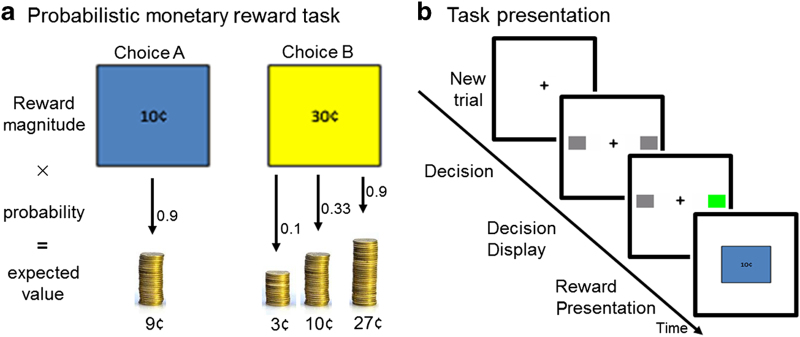Figure 1.
(a) Participants selected either a large reward of 30¢ or a smaller reward of 10¢ by pushing a right or left box. Although the probability of receiving 10¢ remained constant at 0.9, the probability of receiving 30¢ varied between runs (0.1, 0.33, or 0.9). After the first 10 trials of each run, participants developed an expected value (EV) (probability×reward magnitude (RM)) of their choice. Prediction error (PE) was calculated as the difference between RM and EV for each trial (that is, if EV=9¢ (0.9×10¢), but RM=0¢, then PE=−9). (b) Three conditions were presented. During Decision, subjects selected the left or right box corresponding to a 10¢ or 30¢ choice. For a given run, the left/right position of the 10¢/30¢ choice did not change. During Decision Display, the color of the box selected changed, indicating that a response was made. Feedback was received during Reward Presentation (RM of 0¢, 10¢, or 30¢).

